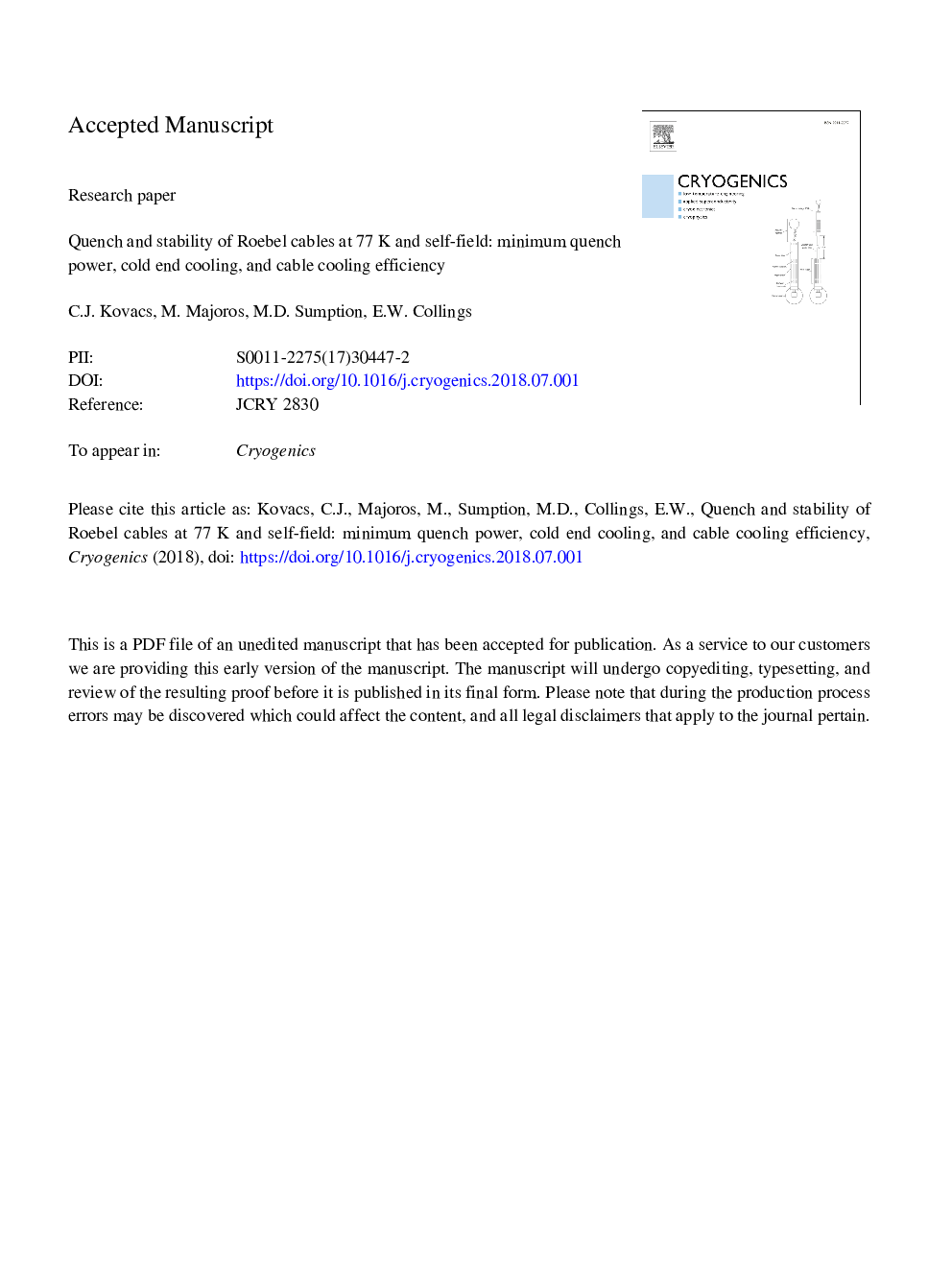| Article ID | Journal | Published Year | Pages | File Type |
|---|---|---|---|---|
| 10141860 | Cryogenics | 2018 | 31 Pages |
Abstract
A 9-tape, 14â¯mm wide ReBCO Roebel cable was soldered onto a U-shaped holder. The critical current, Ic, was measured at 77â¯K and self-field. The cryostability of the cable was studied in response to the application of local pulses of 1-14â¯W at several values of iâ¯=â¯I/Ic. A detailed analysis of the cable's cryostability was presented. With a Stekly parameter αâ¯=â¯G/Qâ¯Â«â¯1 and a heat generation margin of â¼190â¯kW/m2 the present ReBCO cable was shown to be ultra cryostable with respect to internally generated transport-current overload. However, the cable was much less stable against externally and locally applied disturbances because of the tendency to initiate local film boiling. A locally applied 10â¯W led to a prediction of a film-boiling-cooled zone with a temperature of 181â¯K. However, when cold-end cooling was considered, the predicted hot spot temperature decreased to 87-115â¯K depending on the surface-cooling efficiency. Predictions were compared to experiment extracting a cooling efficiency parameter representing the penetration of the cryogen into the cable. Experiment showed the generation of time stable normal zones which were a function of disturbance power. This led to the description of the cable stability in terms of minimum quench power; the results are presented in stability diagrams.
Related Topics
Physical Sciences and Engineering
Materials Science
Electronic, Optical and Magnetic Materials
Authors
C.J. Kovacs, M. Majoros, M.D. Sumption, E.W. Collings,
